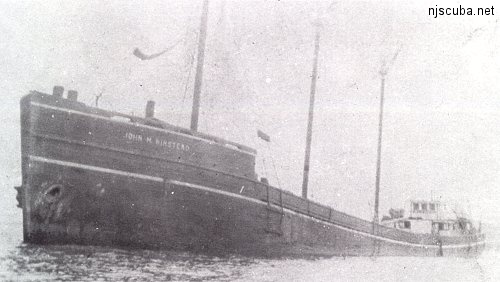Cadet - John H. Winstead

- Type:
- shipwreck, schooner barge
- Built:
- 1922, Baltimore MD USA as John H Winstead
- Specs:
- ( 215 x 36 ft ) 1160 tons
- Sunk:
- Monday December 5, 1927
foundered in storm - no casualties - Depth:
- 80 ft
The John H Winstead was under tow in a string with the Millville and another barge when the Millville began to sink in rough seas. The towing tug immediately released all the barges to pick up the crew of the Millville, which sank soon after. The remaining two barges rode out the storm at anchor, but the Winstead sank the next morning.
Together with a completely erroneous listing for the ship Valparaiso, and perhaps confused by the proximity of the Brunette, these became known as the "Three American Barges." Despite the well-documented sinkings, the original names were mostly forgotten as the wrecks took on a host of nicknames until Dan Lieb of the NJHDA straightened it all out. However, this popular dive site will surely continue to be known as the Cadet; also sometimes known as "Cramer's".

There is still coal to be found among the wooden ribs. Fishing is usually excellent; lobstering is much less so. The bottom is silty, and visibility is often poor.


Side-scan sonar image and diagram courtesy of Capt. Steve Nagiewicz.




Questions or Inquiries?
Just want to say Hello? Sign the .